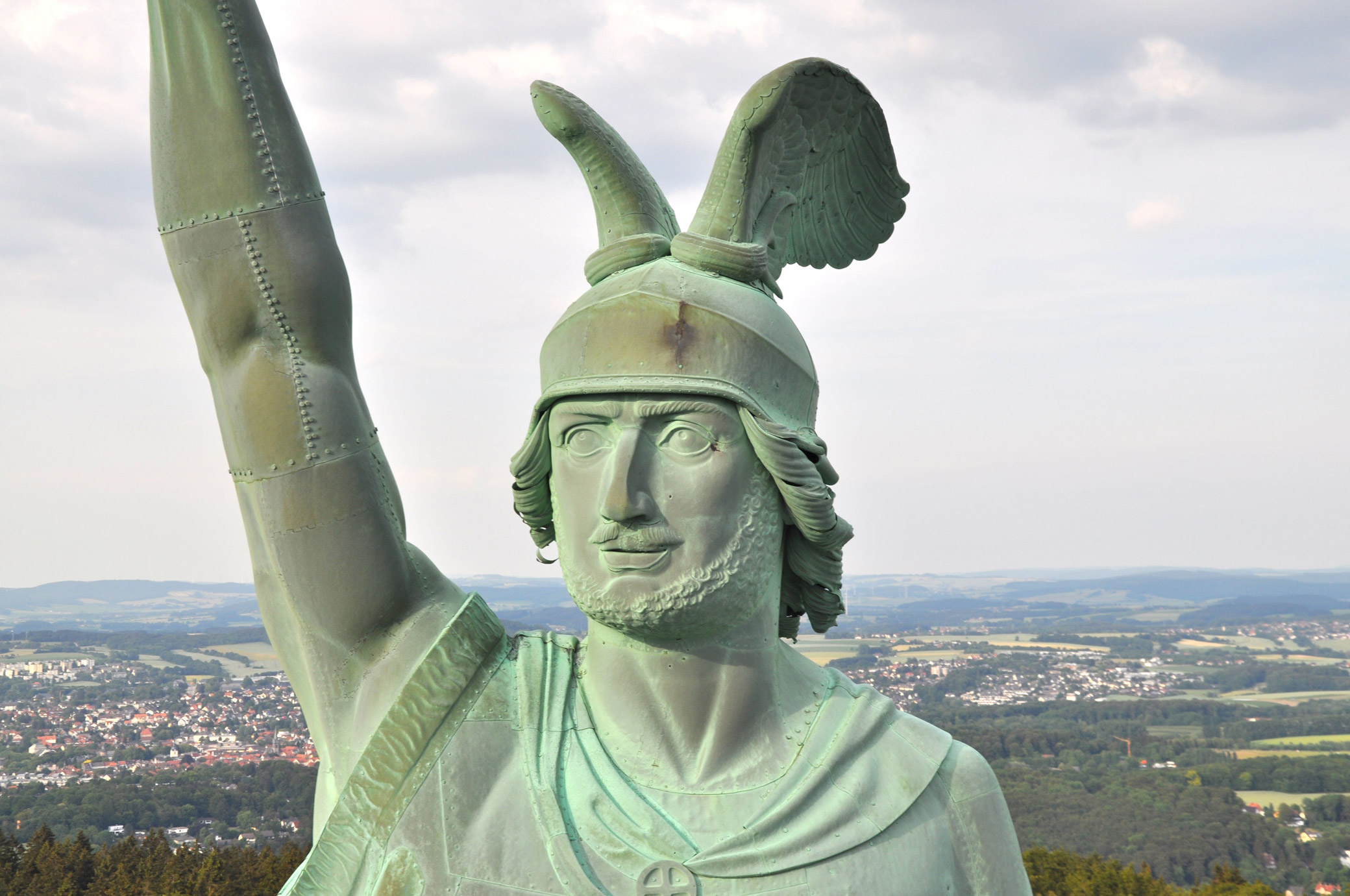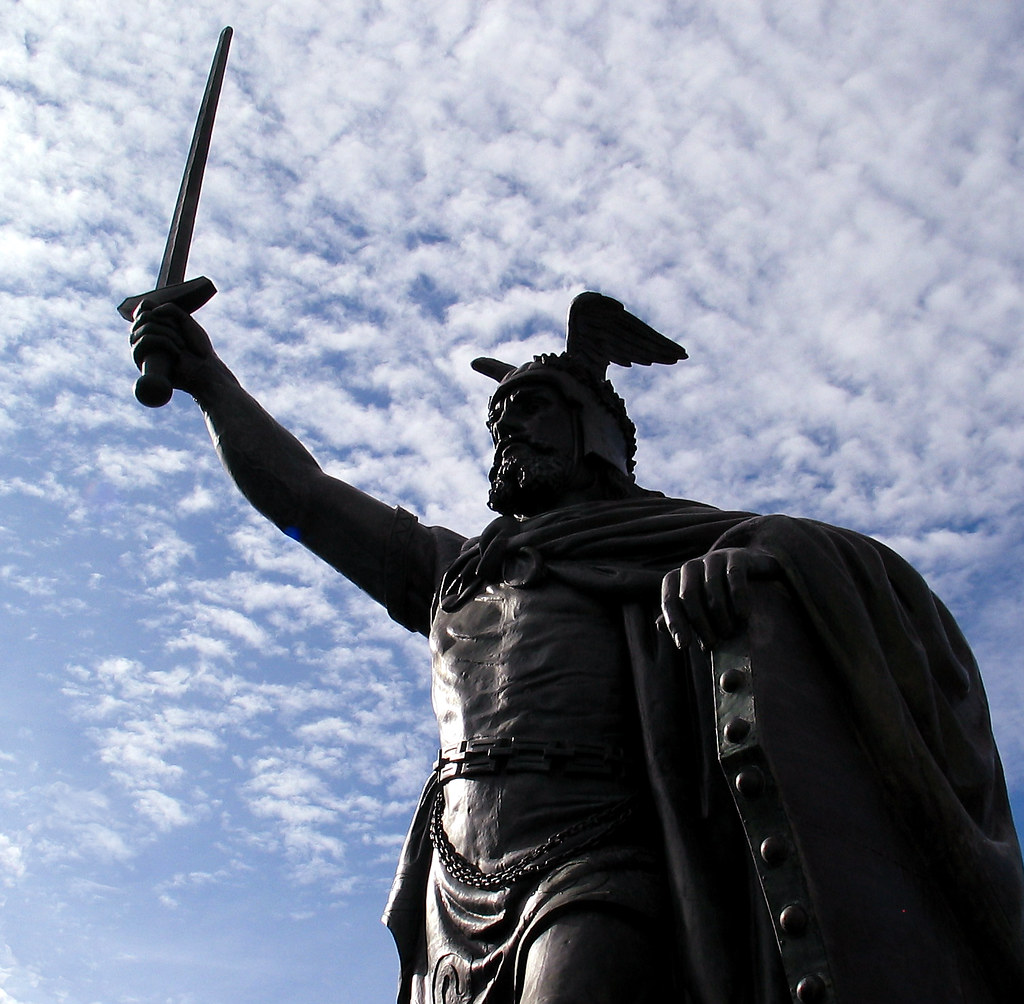
With the exception of "Editorial use only" photos (which can only be used in editorial projects and can't be modified), the possibilities are limitless.If you plan to visit Germany and you take your American appliances there are a few things you must look into. First you must know that most American appliances are designed to run off of 110 volts and Most German appliances are designed to run off of 220 volts. Arminius (18/17 BC AD 21), also known as Armin or Hermann (Arminius being a Latinization, similar to Brennus), was a chieftain of the Germanic Cherusci who defeated a Roman army in the Battle of the Teutoburg Forest. Arminiuss influence held an allied coalition of Germanic tribes together in opposition to the Romans but after defeats by the Roman general Germanicus, nephew of the Emperor. What's a royalty-free license? Royalty-free licenses let you pay once to use copyrighted images and video clips in personal and commercial projects on an ongoing basis without requiring additional payments each time you use that content. It’s a win-win, and it’s why everything on iStock is only available royalty-free.
4, Roman legions established bases on the Lippe and Weser rivers.Man Hit by Toppled Confederate Statue Last Year Suffering From Traumatic Brain Injury I will say right now he has a mind of a 13-year-old because one of the major impacts was his communication, his understanding, and problem-solvingHermann (Arminius) A Cheruscan chieftain negotiated an alliance of the Marsi, Bructeri, and Chatti tribes with his own warriors to defend Germania from Roman conquest. Statue of Cheruscan Arminius in the Teutoburg Forest near the city of Detmold, Germany.Between 6 B.C. Hermann Monument in the Teutoburg Forest in Germany. The Hermann Monument, or Hermannsdenkmal a monument in Detmold, Germany, commemorating the war chief Arminius and the Battle. Hermannsdenkmal in Detmold Germany.
Inch by inch, several young archaeologists under her direction are bringing to light a battlefield that was lost for almost 2,000 years, until an off-duty British Army officer stumbled across it in 1987.Photo about Historic Statue of Cheruscan Arminius in the Teutoburg Forest near the city of Detmold, Germany. Atrim, short-haired woman, Wilbers-Rost has worked at the site, which is ten miles north of the manufacturing city of Osnabrück, Germany, since 1990. “You’re holding a nail from a Roman soldier’s sandal,” she said. Wilbers-Rost, a specialist in early German archaeology, peered through wire-rimmed glasses, brushed away some earth, and handed an object to me.

All Europe west of the Elbe might well have remained Roman Catholic Germans would be speaking a Romance language the Thirty Years’ War might never have occurred, and the long, bitter conflict between the French and the Germans might never have taken place.”Founded (at least according to legend) in 753 b.c., Rome spent its formative decades as little more than an overgrown village. “Almost all of modern Germany as well as much of the present-day CzechRepublic would have come under Roman rule. Benario, emeritus professor of classics at EmoryUniversity, a very different Europe would have emerged.

To Augustus, he must have seemed just the man to bring Roman civilization to the barbarous” tribes of Germany.Like his patrons in Rome, Varus thought occupying Germany would be easy. Varus, 55, was linked by marriage to the imperial family and had served as Emperor Augustus’ representative in the province of Syria (which included modern Lebanon and Israel), where he had quelled ethnic disturbances. They were planning to investigate reports of an uprising among local tribes. He led an estimated 15,000 seasoned legionnaires from their summer quarters on the WeserRiver, in what is now northwestern Germany, west toward permanent bases near the Rhine. They would pay dearly for their ignorance.There are many reasons, according to ancient historians, that the imperial Roman legate Publius Quinctilius Varus set out so confidently that September in a.d. The Romans knew little of this densely forested territory governed by fiercely independent chieftains.

To achieve his goal, he concocted a brilliant deception: he would report a fictitious “uprising” in territory unfamiliar to the Romans, then lead them into a deadly trap. On that September day, he and his mounted auxiliaries were deputized to march ahead and rally some of his own tribesmen to help in putting down the rebellion.Arminius’ motives are obscure, but most historians believe he had long harbored dreams of becoming king of his tribe. For his valor on the field of battle, he had been awarded the rank of knight and the honor of Roman citizenship. (His tribal name has been lost to history.) He spoke Latin and was familiar with Roman tactics, the kind of man the Romans relied on to help their armies penetrate the lands of the barbarians. Some tribes even pledged allegiance to Rome German mercenaries served with Roman armies as far away as the present-day Czech Republic.One such German soldier of fortune, a 25-year-old prince of the Cherusci tribe, was known to the Romans as Arminius. In time, despite growing resentment of the Roman presence, the tribes exchanged iron, cattle, slaves and foodstuffs for Roman gold and silver coins and luxury goods.
Meanwhile, a violent rain and wind came up that separated them still further, while the ground, that had become slippery around the roots and logs, made walking very treacherous for them, and the tops of the trees kept breaking off and falling down, causing much confusion. The legionnaires, wrote third-century historian Cassius Dio, “were having a hard time of it, felling trees, building roads, and bridging places that required it. As they progressed, the line of Roman troops—already seven or eight miles long, including local auxiliaries, camp followers and a train of baggage carts pulled by mules—became dangerously extended. “The Romans,” says Wells, “thought they were invincible.”Arminius had instructed the Romans to make what he had described as a short detour, a one- or two-day march, into the territory of the rebels.The legionnaires followed along rudimentary trails that meandered among the Germans’ farmsteads, scattered fields, pastures, bogs and oak forests.
So Varus, on the second day, pressed on doggedly in that direction. “This is pure conjecture,” says Benario, “but Arminius must have delivered a message that the Germans should begin their assault.”The nearest Roman base lay at Haltern, 60 miles to the southwest. “At first they hurled their volleys from a distance then, as no one defended himself and many were wounded, they approached closer to them.” Somehow, the command to attack had gone out to the German tribes.
“An army unexcelled in bravery, the first of Roman armies in discipline, in energy, and in experience in the field, through the negligence of its general, the perfidy of the enemy, and the unkindness of fortune. Most of his commanders followed suit, leaving their troops leaderless in what had become a killing field. Rather than face certain torture at the hands of the Germans, he chose suicide, falling on his sword as Roman tradition prescribed. “But here, with no room to maneuver, exhausted after days of hit-and-run attacks, unnerved, they were at a crippling disadvantage.”Varus understood that there was no escape. “In open country, the superbly drilled and disciplined Romans would surely have prevailed,” says Wells. As the increasingly chaotic and panicky mass of legionnaires, cavalrymen, mules and carts inched forward, Germans appeared from behind trees and sand-mound barriers, cutting off all possibility of retreat.
Arminius Statue How To Escape Into
30 account of Velleius Paterculus, a retired military officer who may have known both Varus and Arminius.Only a handful of survivors managed somehow to escape into the forest and make their way to safety.


 0 kommentar(er)
0 kommentar(er)
